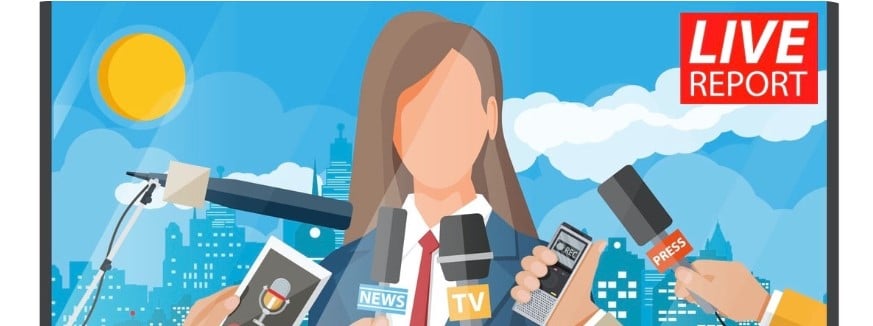Nowadays, one vague statement, one unsecured email, or one not-so-clever social media post can send a company’s reputation into a downward spiral. It only takes one poorly judged action to go viral for all the wrong reasons, and you don’t want to be the agency that initiated it.
How and what you say (and where you say it) matter more than ever. Inconsistent messages, delayed (or defensive) responses, overlooked cybersecurity risks, and more can do serious damage to brand image, company reputation, and overall trust.
Still, mistakes happen. If they hadn’t, we wouldn’t have been able to compile this list of media communication mistakes to avoid. So, let’s start with the right foot forward and learn from others’ mistakes.

1. Mixed Messages During a Crisis
When a crisis hits, the last thing you want is a game of telephone behind the scenes. Conflicting messages from different spokespeople or inconsistent statements across media channels have the potential to turn a bad day into a viral nightmare.
Case in point: During the Boeing 737 Max crisis, the company delivered inconsistent updates about the aircraft’s safety and software fixes. Public confusion and media scrutiny intensified, ultimately costing the company billions in reputation repair and regulatory penalties. And things aren’t fully settled even today.
We’re already going through a “Crisis of Grievance,” according to the 2025 Edelman Trust Barometer, which makes consumers more receptive to negative news (especially when it comes to their favorite brands). You don’t want to add gasoline to an already smoldering situation.
The best way to avoid becoming the laughingstock of the internet for a day or two (the average lifespan of a viral story) is to implement a centralized crisis comms protocol paired with an intelligent crisis management system. Your messaging must be clear, unified, and authentic.
2. Overusing Buzzwords and Jargon
“Innovative synergy leveraging strategic stakeholder engagement to optimize holistic outcomes.”
If your media statement reads like this, step away from the keyboard!
Today’s customer is fed up with buzzwords and knows they don’t mean anything specific. So, don’t be surprised if your campaign sparks ridicule instead of resonance.
Exhibit A: WeWork’s infamous S-1 IPO filing was crammed with abstract lingo like “elevating the world’s consciousness.” The public (and the press) had a field day. Investors? Not so much. The IPO collapsed, and the company’s valuation tanked from $47 billion to under $10 billion in weeks.
We know it’s tempting to include all the pompous words your team (or intelligent chatbot) knows, but real people still want you to speak like a real human. If your message gives the average reader a stroke mid-read, it needs rewriting.
3. Ignoring Digital Security in Communication Channels
Most teams, especially in marketing and PR, work remotely. Flexibility and access to a larger talent pool stoke creativity and speed things up.
However, there’s always the risk of a data breach lurking in the shadows. PR agencies are especially juicy for ill-intended actors, as they often handle confidential documents, unlaunched products, trade secrets, and so on.
Therefore, basic protections like free antivirus software for Windows or a VPN solution are a must-have. Otherwise, you might end up like the Volkswagen Group of America, which lost over 3.3 million customers’ sensitive data in 2021 due to an unsecured database. The fallout included public backlash and regulatory scrutiny.
In today’s online climate, you must use secure, enterprise-grade tools for file sharing and messaging. Encrypt everything sensitive. Limit access to “need to know,” and make cybersecurity hygiene a regular part of your team’s training.
4. Delayed or No Response to Negative Coverage
Remember the United Airlines’ 2017 PR nightmare when a passenger was forcibly removed from an overbooked flight? Sure, 8 years later, airlines still overbook flights, but the public backlash back then was swift, global, and brutal, resulting in a plummeting stock price and long-term brand damage.
Besides the fact that the way they handled their mistake was unacceptable, their response to the public in the following days was defensive and dismissive.
A delayed response can make your client seem evasive, unprepared, or indifferent. Worse, it gives the narrative time to harden without your side of the story.
This is why it’s essential to monitor coverage of your brands in real time (tools like Agility PR can help) and have pre-drafted holding statements and approval flows ready.
Wrap Up
Digital communication is powerful, but it’s also unforgiving. As a PR professional, you know that every message you send (public or private) is a potential liability or an opportunity. In an era where screenshots go viral and breaches make headlines, it’s best to learn from others’ media communication mistakes, rather than your own.
Avoid these common traps, tighten your protocols, and you’ll safeguard your messaging and your reputation. Clear processes, secure channels, and timely, human responses are your best defense. PR is about control, and in the digital world, control starts with communication done right.




